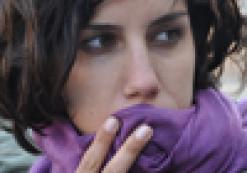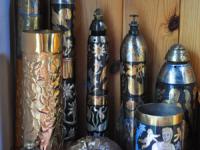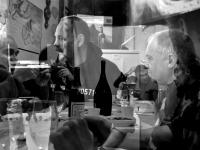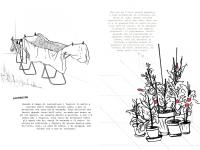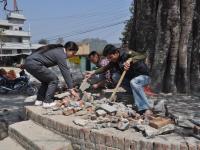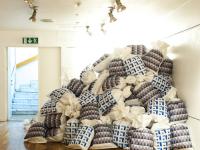Prelievi H3/X/Y classe E (Pettino, L’Aquila)
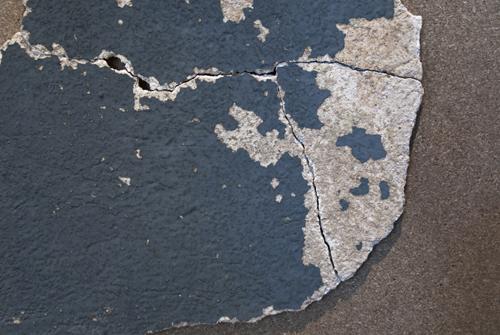
Prelievi H3/X/Y classe E (Pettino, L’Aquila)
In collaboration with Cristina Lusuardi, restorer.
Combination of the rip-and-detachment restoring technique of frescoes on samples of civil plasters re-located on wooden panels. 2011
The popular L’Aquila architecture of the Seventies, where I chose to act, was the most stricken by the earthquake. The poorest part of the population lived here, the part that the State didn’t and still doesn’t want to preventi- vely safeguard; the collapsed buildings are still in the same, identical conditions of two years and a half ago, with wreckage, rubbish and personal belongings everywhere. Instead of rendering justice to the most stricken citizens, the preferred solution was to send the population away from its geographical, social and personal memory, direc- ting it first to the hotels on the shores of Abruzzo, then in the new towns, far away from the first L’Aquila suburbs, abandoning the buildings to their state of deterioration; they should be torn down and re-built due to the serious structural conditions, that are moreover dangerous for the inhabitants themselves (in this we can detect an in- terest to keep a different kind of memory alive, the one of the tragedy, that appeals to disgrace, attracting curious tourists, that are often invasive and intrusive).
I wanted to try combining the architectural ‘stacco’ and ‘strappo’ (rip-and-detachment restoring technique of fre-
scoes), re-connecting to a historical, social and cul- tural necessity to preserve memory. I am speaking about a recent kind of memory, a contemporary one, a memory that belongs to everyone, that is collecti- ve, of those who lived in the suburbs of L’Aquila, the parts that had been most recently built in the city, and yet the ones that were stricken the hardest.This is why I went to L’Aquila trying to “save” some con- struction memories that for some of us are already history, as it should be for everyone.
The choice to present a triptych communicates with both the traditional and modern Medieval painting traditions along with L’Aquila’s strong symbolism drenched in religion, paganism and mysticism. Num- ber 99 (a multiple of 3) particularly recurs in every corner of the city: 99 fountains, squares, churches, bell tolls, etc... This is a legend, more than a historical cer- tainty, a belief that the inhabitants of L’Aquila diffused by word of mouth, and that will increasingly tend to disappear given the current closure of the historical centre: that common space in which the cultural ima- ginary of a population lives and develops.

